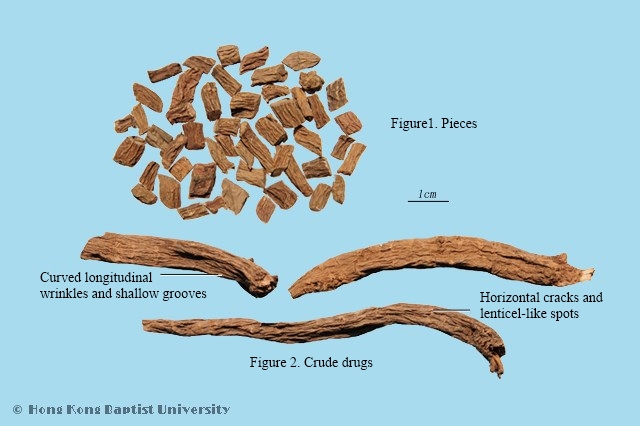Production RegionsPrimarily produced in the Chinese provinces of Yunnan, Guizhou, Hubei.
Macroscopic FeaturesLong cylindrical, slightly flat, slightly curved, 5~15cm long, 0.5~2cm diameter. Externally brown or grayish-brown, with numerous obvious curved longitudinal winkles and grooves, and numerous horizontal long lenticels and few rootlet scars. Slightly soft texture, dried and hard after long-term storage. Easily broken, uneven fractured surface, cortex is greenish-brown or pale brown, xylem is yellowish-brown, often has radial striations. faintly aromatic odor, bitter, slightly sweet and then astringent taste.
Quality RequirementsSuperior medicinal material is thick, soft, with greenish-brown cortex.
PropertiesBitter, acrid, slightly warm.
FunctionsSupplements liver and kidney, strengthens sinew and bone, adjusts blood vein, continues broken injury, stops metrorrhagia and metrostaxis. Apply to aching pains in the loins and back, atrophy and arthralgia spasms of limbs and joints, injuries from falls, damage of tendons and fractures, fetal movement and bloody show, profuse uterine bleeding, emissions, leukorrhea, superficial infections, swelling sores. Wine xu duan often apply to wind-damp impediment, injuries from falls. Salt xu duan often apply to aching pains in the loins and back.
OriginThe dried root of Dipsacus asperoides C. Y. Cheng et T. M. Ai.(Dipsacaceae)
